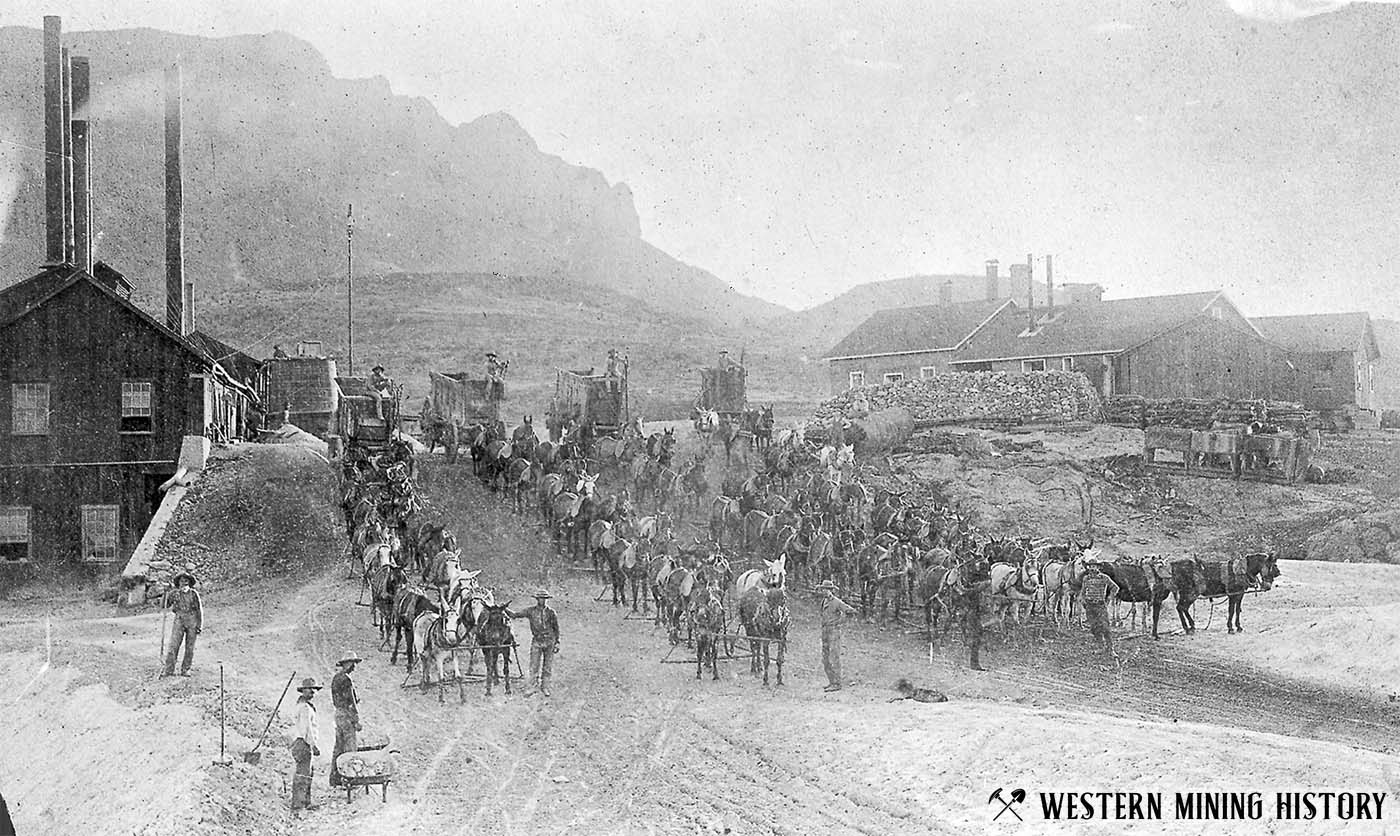Silver King History
Editor's note: Some sources tell the story of the discovery of the Silver King mine differently, even claiming that this was yet another rich mine discovered when a prospector was looking for his lost mule. An article from an August, 1875 edition of the Weekly Journal-Miner (Prescott, Arizona) gives a detailed account of the discovery which is used as the source for the discovery portion of this article.
The Silver King Mine was first discovered in the early 1870s, at a time when conflicts with the Apache indians were frequent and few people dared prospecting or settling in the area. General George Stoneman (later governor of California), setup a camp near the site of frequent Apache raids, and ordered the construction of a road into the Pinal Mountains. The road became known as the Stoneman Grade.

One of the soldiers working on the road made the discovery of the Silver King vein. To one of his fellows he said "If I live to be discharged I shall be one of the richest men in Arizona", and told him of the vein's location. Before the man was discharged, he was killed by a mule.
Around this time four local farmers–Regan, Copeland, Mason and Long-made occasional prospecting trips in the Pinal Mountains, These men discovered a copper vein that would later be the Globe mine. In March of 1875, the men were fitting out their party at the settlement of Florence for a return trip to their Globe mine when they were approached by the discharged soldier who had been told of the silver vein. The man then told them of his dead comrade's story:
When you go up the Stoneman grade, said he, you will pass the tanks; you will pass old Camp Pickett, then some five miles on you will come into a mountainous country; you will see a little valley like, hemmed in with mountains; near the head of the valley you will see some immense boulders on the side of the road, off just a little bit you will see a little brown hill rising up all by itself, and in that hill, if what my old comrade said is true, you will find the richest mine in the world. You are going right by the mine anyhow, and you may just as well stop and look a little for it.

The Regan party was at first not very impressed by the ex-soldier's story–after all why trust the word of a stranger when they had a rich copper mine already located? On their way to their mine they noted the general location of the silver vein as they passed the landmarks that were described to them, but did not stop to investigate.
They gathered their copper ore samples and on the return trip stopped to deliberate at the site of the supposed silver vein. Three of them continued their trek back to Florence while Copeland stayed to investigate. He found the silver outcrop almost immediately, and proceeded to collect samples of the ore. Upon rejoining the party and returning to Florence, they took their samples to a blacksmith's forge and melted out a "fine bar of pure silver."

What happened next was reported by the Weekly Journal-Miner:
The party had been in great haste to get some copper out from the Globe to test their mine, but it was concluded now that the copper could wait. They rustled up a wagon, a few mining tools and returned next day to the little brown hill, broke off 1,500 pounds of rock from the surface, and took it up to Tucson with their copper. The Tucson people admired the ore, so much so that one of them offered $800 for the $1,500 lbs., which offer was immediately accepted.

The Silver King
By the fall of 1875 fifty men were working the Silver King mine, shipping thirty tons of silver ore to San Francisco each month. Newspaper articles reported that in the spring 1877 the best ore being taken from the mine assayed at up to $20,000 to the ton. That year, investors acquired the mine and established the Silver King Mining Company. During the next nine years over $6,000,000 in silver was produced here.
In November of 1878 the Phoenix Weekly Herald reported "The bullion product for the month of August was 86,000, and this from ten stamps. The ore is increasing in richness, and when all the mills in Pioneer district are devoted to crushing King ore, that company will be able to make a showing second to no silver mine on the Pacific coast."
Seven freight teams hauled ore from the Silver King mine to the mills at Pinal – these teams were captured in a series of photos from around 1880.

Silver King was both the richest silver mine in Arizona and the site of a frontier mining camp. The town was at an extremely isolated location at this time, and development of the town and mine were slow. Not much is known about life in the camp, but it is said that there were two hotels, and of course numerous saloons.

The town peaked in the mid 1880s but declined as the grade of the ore declined and silver prices dropped. Silver King's post office operated between 1877 and 1912.
Arizona Mining Photos

View over 35 historic Arizona mining scenes at A Collection of Arizona Mining Photos.
Arizona Gold

"Where to Find Gold in Arizona" looks at the density of modern placer mining claims along with historical gold mining locations and mining district descriptions to determine areas of high gold discovery potential in Arizona. Read more: Where to Find Gold in Arizona.
